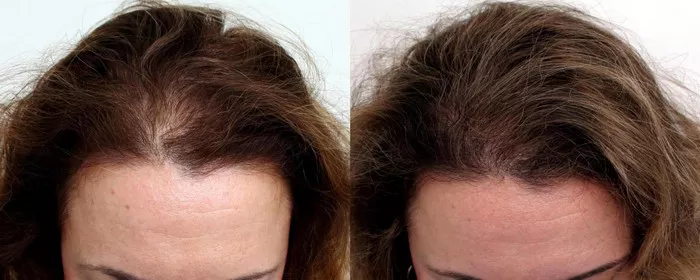Hair transplantation has emerged as a widely sought-after solution for individuals grappling with hair loss. While the procedure has proven to be highly effective, questions often arise regarding its safety. In this article, we will delve into the safety aspects of hair transplants to provide a comprehensive understanding for those considering this transformative procedure.
1. Understanding the Basics of Hair Transplants
Before assessing the safety of hair transplants, it’s crucial to understand the procedure itself. Hair transplantation involves harvesting hair follicles from a donor area (typically the back or sides of the head) and transplanting them to the recipient area (where hair loss is evident). The procedure is minimally invasive, performed under local anesthesia, and has evolved significantly over the years with advanced techniques like Follicular Unit Transplantation (FUT) and Follicular Unit Extraction (FUE).
See Also: The Cost of Hair Transplant in Chennai: Factor and Consideration
2. Common Risks and Side Effects
Like any surgical procedure, hair transplants are not entirely without risks. While complications are rare, it’s essential to be aware of potential side effects such as bleeding, infection, swelling, and scarring. These issues are generally mild and temporary, and with proper post-operative care, they can be effectively managed. Selecting a skilled and experienced surgeon significantly reduces the likelihood of complications.
3. Allergic Reactions and Anesthesia Concerns
Allergic reactions to medications or anesthesia used during the procedure are exceptionally rare. However, it’s vital for individuals to disclose their medical history and any allergies to the medical team beforehand. The local anesthesia administered during the surgery is generally well-tolerated, but individuals should be aware of the potential for mild discomfort or reactions.
4. Safety Concerns in Specific Patient Groups
Certain individuals may be more prone to complications, emphasizing the importance of careful patient selection. Individuals with uncontrolled medical conditions, such as diabetes or heart disease, may face increased risks. Pregnant or breastfeeding women are typically advised to postpone the procedure, and those with a history of keloid scarring should approach the decision with caution.
5. Long-Term Safety and Efficacy
The long-term safety and efficacy of hair transplants have been well-established through extensive research and clinical studies. When performed by a skilled and reputable surgeon, the results are generally permanent, and the transplanted hair behaves like natural hair. However, it’s crucial to note that individual experiences may vary, and factors such as ongoing hair loss or changes in health can influence the long-term outcome.
6. Choosing a Qualified and Experienced Surgeon
One of the most critical factors influencing the safety of a hair transplant is the skill and experience of the surgeon. Opting for a qualified, board-certified surgeon with a proven track record in hair transplantation significantly reduces the risk of complications. Researching and selecting a reputable clinic, reading patient reviews, and reviewing before-and-after photos can help individuals make an informed decision about their choice of surgeon.
7. Post-Operative Care and Follow-Up
Ensuring a safe and successful outcome extends beyond the operating room. Following the post-operative care instructions provided by the surgeon is crucial for minimizing risks and optimizing results. Regular follow-up appointments allow the surgeon to monitor the healing process, address any concerns, and provide guidance on maintaining the transplanted hair for the best long-term results.
Conclusion
In conclusion, while no medical procedure can be deemed 100% risk-free, hair transplants are considered safe when performed by qualified professionals in appropriate candidate settings. Understanding the potential risks, selecting a reputable surgeon, and adhering to post-operative care instructions are integral to a safe and successful hair transplant experience. For individuals considering this transformative procedure, thorough research, consultation with experts, and realistic expectations contribute to a positive outcome and a restored sense of confidence.


